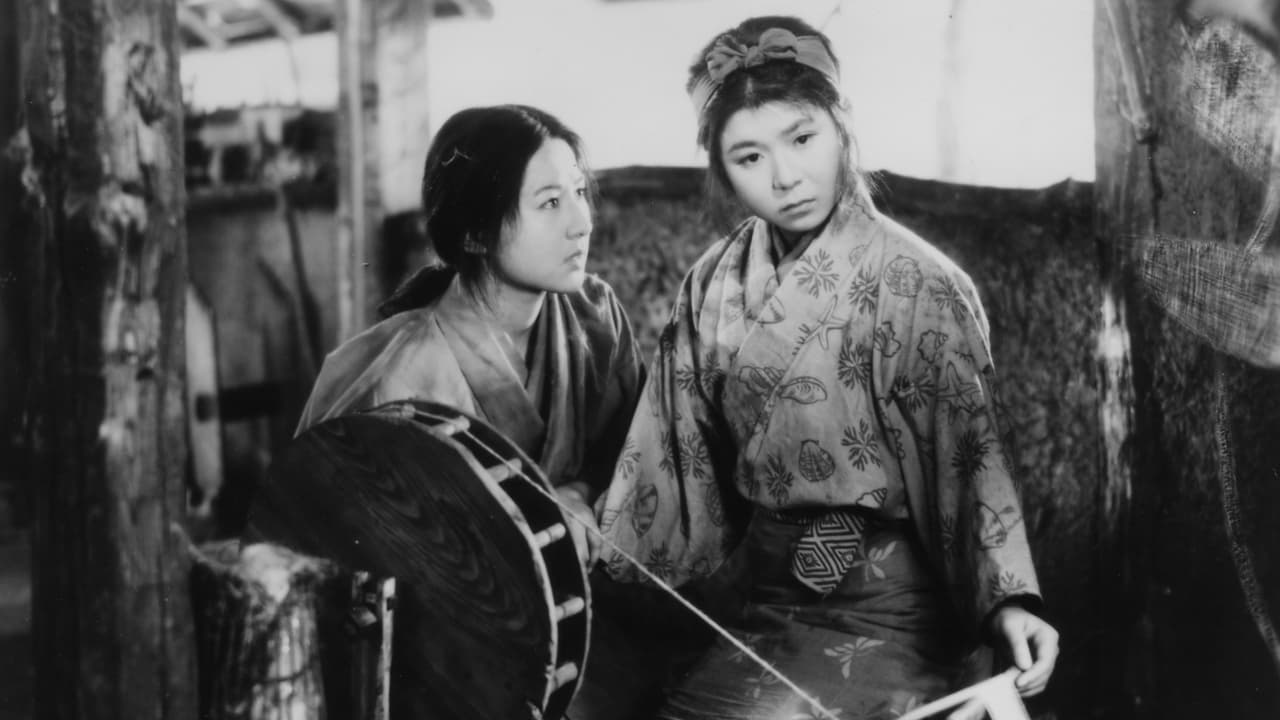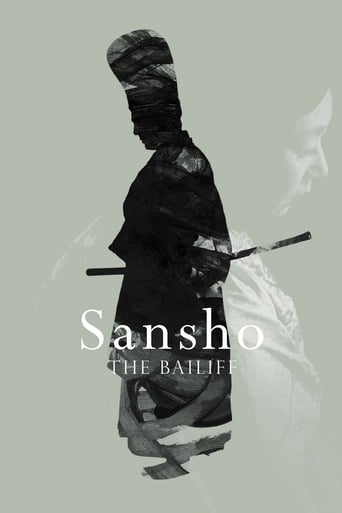

The sincere beauty of Kenji Mizoguchi's masterpiece Sanshô Dayû (aka Sansho the Bailiff) from 1954 is made even more persuasive due to its inherently understated, subtle (even humble), but philosophically resonant Japanese/Asian Cinematic style in which genuine emotional 'power' is authentically generated thru restraint by directly contrasting outward societal 'quiet complacency' versus paradoxical inner torment/ sparking the courage to steadfastly counter-act experienced injustices (which were many during Japan's 'Heian' feudal period, when this story took place).But there is also much about Kenji Mizoguchi's film's irresistible emotional resonance that is actually somewhat difficult to fully understand, since this story seems so simple upon first glance (with source material by Ogai Mori), dealing with a Mother and two children sold into slavery and the subsequent horrors witnessed and terrible sacrifices experienced, with arduous attempts made to ultimately right some of these relentlessly inimical wrongs.Suffice to say that a central theme is the preservation and actual honoring of 'humanity' thru acts of genuine empathy and merciful deeds (even after experiencing extremely unsympathetic circumstances). Much credit must go to the three gifted-thespian Leads in meticulously conveying the accumulated torment/anguish/and resolve inherent to these sensitive but steadfast characters: Kinuyo Tanaka (as Mother) and as the grown children, Kyoko Kagawa (as Anju) and Yoshiaki Hanayagi (Zushio) and, of course, Eitaro Shindo (as Sansho).Watching Kenji Mizoguchi's 'Sansho the Bailiff' represents one of those rarefied Cinematic experiences that will leave you with an indelibly-changed (hopefully for the better) outlook pointing toward the potential for 'humanity' to eschew the easy (well-trodden) path of self-interest and conversely seek/traverse the more challenging but rewarding path of 'common-good' Kenji Mizoguchi's Cinematic message is not preachy or didactic by any means, but "Sansho the Baliff's positive impact is still undeniable.
... View MoreViewed on DVD. A photo play version of an ancient folk tale from when commercial slavery was an important contributor to regional Japanese economies (the so-called "Dark Ages" of some 1,200 years ago). The tale is tied to an estate manager/overseer (or "bailiff") by the name of "Sansho." The estate is based on slave labor and Sansho is the slave master with life and death power (but torture rather than death is preferred by Sansho as a cost inhibitor). The traditional tale title is used by the director, but the film is not focused on the bailiff character (who plays an in effect supporting role). Direction and cinematography (black and white) are outstanding and seem "joined at the hip" (although the old narrow-screen format is present on the DVD version). Acting is a bit uneven with the adult lead actor (Yoshiaki Hanayagi) tending to overact for the camera (as if in a silent movie or on the stage). Period costumes and mannerism (such as the staging of court protocols and processions) look authentic (judging from other source materials) and the sets are most impressive. The film score is a major contributor to the style and enjoyment of this movie. It is one of the best (it not the best) composed for any Japanese movie from the 20th Century. Solos of traditional instruments are seamless interwoven into modern orchestral arrangements. Leif motifs and themes are used for characters and scenes/locations. The score provides the acoustical glue that helps to hold this movie together and is one of the two contributors to the film's most impressive dynamics (the other contributor being camera movements). WILLIAM FLANIGAN, PhD.
... View MoreThis 1954 movie, set in Medieval Japan, and directed by Japanese master Kenji Mizoguchi is a great adventure film. The story is a long one (warning, major point plots will be revealed ahead) but basically is about a brother and sister, Zushio and Anju, children of a powerful but honest governor, who are taken from their mother and sold into slavery once their father fells into disgrace. They are forced to work under horrible conditions in a camp run by the brutal Sansho of the title. They spend many years there, becoming young adults in the camp. Zushio eventually manages to escape. A high imperial official, moved by his story, appoints him governor of the region where Sansho's camp is located. This will allow him to exact justice for what happened to him. But will he be able to save his mother and sister?Sansho is not the protagonist of the film, but he is a great villain. The actors include some stalwarts of Japanese classic cinema, such as Eitaro Shindo (who is great as Sansho), Kyoko Kagawa (playing Anju as an adult) or Kinuyo Tanaka (as the mother of Zushio and Anju). The movie's only weakness: a crucial plot point is hard to believe: the high official has scarcely met Zushio yet he quickly appoints him as a governor.
... View MoreIt is rare for me as I get older, to be able to watch a film without pausing it for a break. However, this gem of a film had me gripped from start to finish.The camera work is stunning and the acting thoughtful and believable.I have watched quites a few Japanese films from this era, mainly Kurosawa but others such as kaneto shindo. This is a very different film and does not have the comic moments of Kurosawa. It is raw and unforgiving and tells a moving story that can be seen as a comment on humanity in whatever age.I don't want to say anymore as I don't have the eloquence to do it justice or words that would not spoil it for others. All I can say is buy it and watch it on a large widescreen and you will be forever rewarded.
... View More